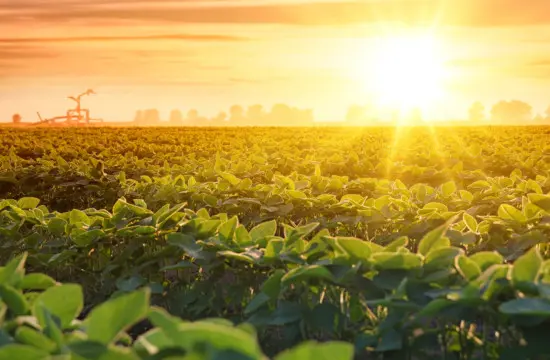One would be hard-pressed to find a more respected industry to work in than agriculture. In a 2020 Gallup poll that measured how Americans viewed business and industry sectors, farming and agriculture came out as the clear leader. But nobody’s perfect – not even those of us in agriculture.
Take nitrous oxide (N2O) emissions, for example. While there is a massive focus these days on carbon emissions (and for good reason, we might add), it should be noted that a unit of N2O is 300 times more harmful than carbon dioxide in the atmosphere. And – you may want to be sitting down for this one – agriculture is responsible for 74 percent of all nitrous oxide emissions in the United States.
Do we really need fertilizer?
It’s numbers like that that result in targets on our back from those outside of agriculture who are looking for a villain. But in this scenario, even when farmers are doing things not exactly perfectly, it’s framed in good intentions. After all, a major reason for this N2O output is due to the use of fertilizers – products whose sole use is to help crops grow faster, stronger and more plentiful to feed a growing (and more demanding) population. (And, quite often, the same people complaining about farming practices are the ones who are the most ignorant about how it all works. But we digress.)
Of the “Big 3” of macronutrients (Nitrogen, Potassium, Phosphorus), Nitrogen is easily the most important. It is, in many cases, the third most impactful investment a farmer will make in a year. In fact, plants absorb more N than any other element. Crops need Nitrogen to ensure they are healthy during growth, but also that the crops provide nutritious sustenance once harvested and picked.
In short, we need Nitrogen.
But can we use less so that less N2O is created? It’s not quite that simple, says Mike Zwingman, Verdesian’s Directory of Agronomy for Row Crops.
“We’re trying to control a lot of chaos” when it comes to Nitrogen, Zwingman told host Tim Mundorf on Central Valley Ag’s SoilHealth podcast. That makes totally effective management difficult, he said.
That chaos is due to the ability of the nutrient to get lost into the groundwater or into the atmosphere. The N that doesn’t make it into the crop has to go somewhere, after all.
“Once nitrates hit the groundwater, we can’t differentiate between whether that which came from leaching or that which came from mineralization,” said Zwingman.
Don’t expect an end to pressures
The American – and global – consumer has become more circumspect when it comes to their food purchases – and where that food comes from. More and more, the chief grocery purchaser in a household wants to know they are getting food that is sustainably grown or good for the environment. That’s not at all lost on Zwingman.
“Based on the pressures on Nitrogen management, I don’t think we can measure the success or failure of a Nitrogen program in the future on yield alone,” he told SoilHealth. “We’re going to see increasing pressure from consumers to ‘show our work.’ At the end of the day there is a growing need to look at potential environmental impacts as well as yield, and using nutrient use efficiency (NUE) metrics helps us clarify that.”
Zwingman points to America’s neighbors to the north as an example of said pressure. Canadian leaders have proposed cutting nitrous oxide emissions by 30 percent by 2050, leading many Canadian farmers there to believe they must cut their Nitrogen use by 30 percent.
Said Zwingman: “That’s not necessarily true.”
The need for stabilizers and enhancers – and more
If ag’s contribution of N2O is a dirty little secret, so, too, is the fact that we can’t grow the food that the world demands of us without it. Humans can’t grow and sustain food on just organic farming alone. While there is something noble about this practice, those are just the facts. (Also: The world is big enough and diverse enough to support and compliment both farming practices – despite what foes of “big ag” would have you believe.)
In short, we need fertilizer. But we can also decrease the amount we are using to cut down on the N2O output – while still having high-performing yields. We can do this by enhancing our Nitrogen fertilizer. Products like Trident, N-Charge G, NutriSphere-N and others stabilize that N fertilizer, thus reducing emissions and enabling that reduction with no yield impact. In other words, these technologies enable producers to grow more food – and sustainably.
Beyond stabilizers, the tried-and-true 4Rs of nutrient management still hold sway. In addition, investing in data and technology advances will help farmers “show their work” with respect to Nitrogen management.
“Manufacturers need to set better data sets to support distributor and retailer data sets. That’s our responsibility to [retailers and distributors] so you can share it with farmers and they can then share with consumers.”
The goal, according to Zwingman, is “limiting the impact on yield potential but increasing our impact on reduction of nitrogen oxide release.” After all, the consumer and regulatory pressures are not going away anytime soon.
“We’re going to see this pressure in the next 3-5 years, not 5-10 years.”


